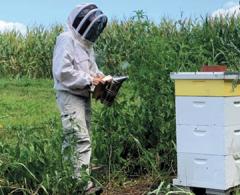
This Article From Issue
March-April 2020
Volume 108, Number 2
Page 68
To the Editors:
In their article “Intelligence May Not Be Computable” (Computing Science, November–December 2019), Peter J. Denning and Ted G. Lewis present a learning hierarchy with admirable characteristics that works well as a straw man, but further discussion is warranted. For example, analog level-0 machines (automated machines) may be able to implement any rule-based system; the difference here seems to be at the hardware level.
As we move up the hierarchy, we might discuss if level 4 (multiagent interactions) should be separate, because nothing prohibits the previous levels from using input from multiple agents. How does level 5 (creative artificial intelligence) differ from unsupervised learning, when and if a program learns enough to become creative? The difference seems to be in applicability (what it learns) rather than functionality (learning without a training set). More confusing to me, levels 5 and 6 (creative AI and aspirational AI) seem divorced from the previous levels, addressing end goals rather than methodology. I cannot find a clear partition in the given hierarchy.
Another point of discussion is introducing terminology. For example, how is their new “fragility” (as described on page 348) different from the “stability” used in many existing fields or even “generalizability,” which comes from the authors’ discipline? How is their “noise” different from “sensitivity” or even the physics of different types of noise? Their discussion about the “inscrutability” of artificial neural networks begs the question of whether the structure of the resulting matrix of connection weights has been studied sufficiently. Is it helpful to set up a theoretical intrinsic barrier that additional work cannot cross?
I find the idea of their hierarchy admirable and useful, but only as a first step. My goal here is not to criticize, but rather to point out that a full vetting of such a hierarchy is needed by the entire community.
A. Louise Perkins
Kiln, MS
Drs. Denning and Lewis respond:
Our hierarchy classifies AI machines by learning power. A machine at a higher level can learn functions that no lower-level machine can learn. The levels overlap—for example, an unsupervised learning machine can also learn under supervision. The purpose of this hierarchy is to arrive at a classification of AI machines that does not rely on a definition of intelligence or on analogies with human intelligent behavior. The hierarchy escapes the hype that plagues claims about capabilities of AI machines: None of the machines in levels 0–4 is intelligent.
Level 0 is a baseline restricted to traditional automation that does not try to learn anything. The higher levels can certainly be viewed as learning systems that support more advanced automation. Levels 5 and 6 (creative and other aspirational machines) are a little different: None of them exists and no one knows whether they can be built. No machine at levels 0–4 has achieved any creative or aspirational function.
The term fragile, meaning easily broken, is common in software engineering. With neural networks, a small change in an input, one that is unnoticeable to a human operator (say, a few pixels in an image), can cause an incorrect output. A similar behavior in an electronic device would be called “extreme sensitivity to small changes of input.” The term noise, which is common in information theory and communications, means that external influences on a channel may perturb a transmitted signal so that the receiver decodes it incorrectly. Attackers can cause malfunctions in fragile image-recognizing neural networks by adding random noise to some pixels of an image. The term inscrutable means that the observable structure of the connection weights of a trained neural network is unintelligible to human observers looking to explain why a network gave an incorrect or unexpected output. Millions of weights are adjusted during the training of one image. Figuring out why changing a few pixels in a trained image causes an incorrect output is currently beyond our research ken.

American Scientist Comments and Discussion
To discuss our articles or comment on them, please share them and tag American Scientist on social media platforms. Here are links to our profiles on Twitter, Facebook, and LinkedIn.
If we re-share your post, we will moderate comments/discussion following our comments policy.